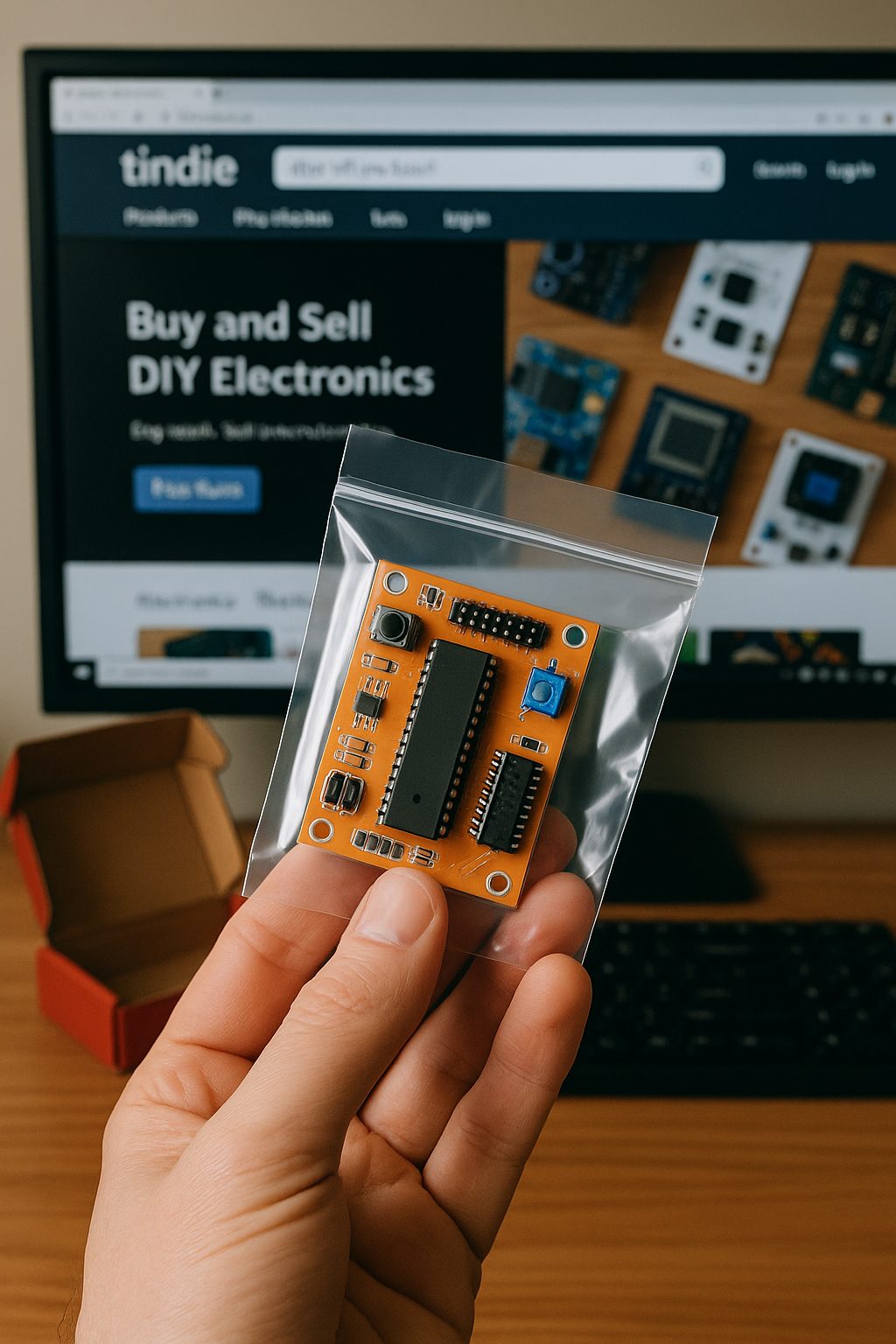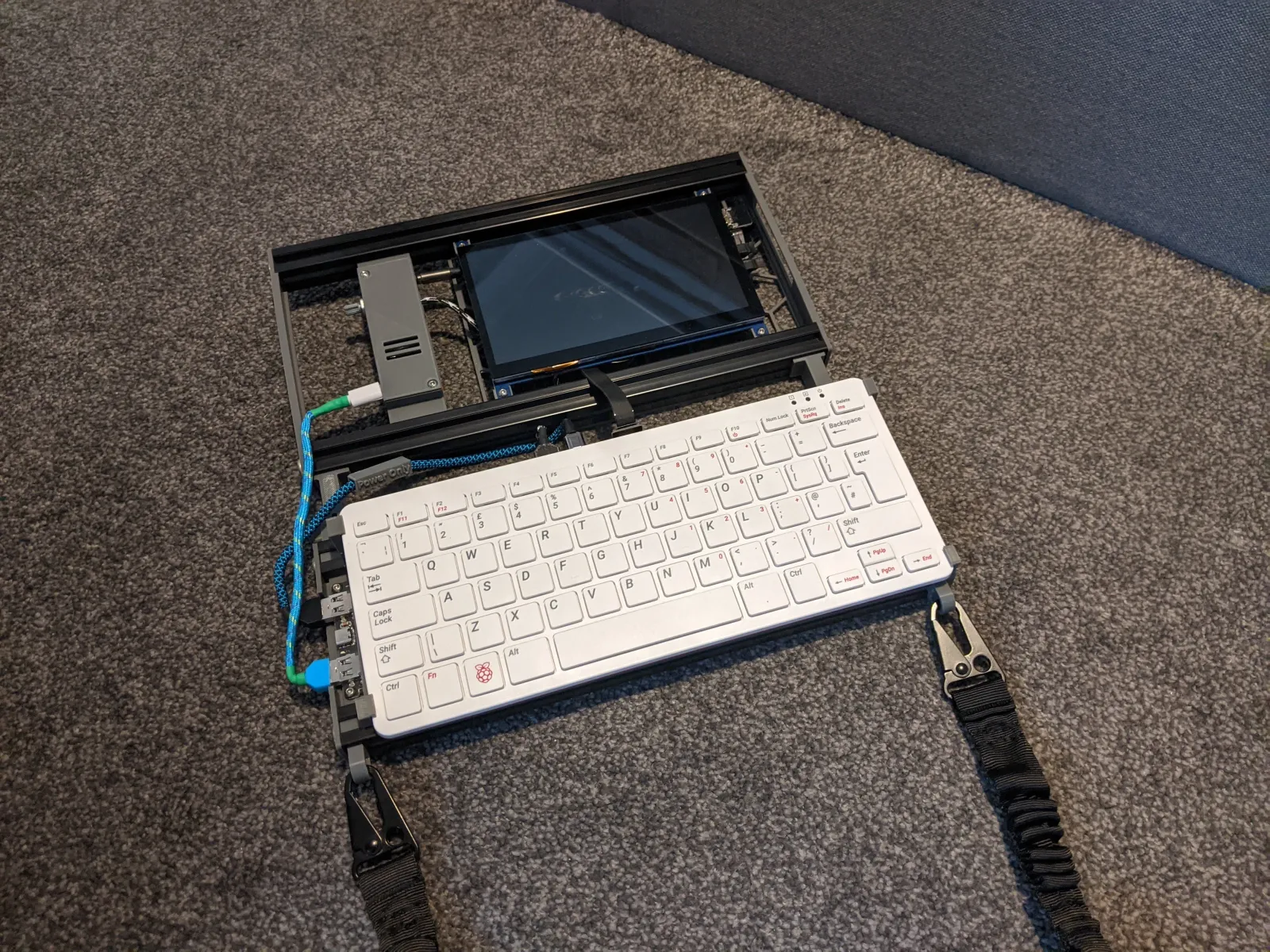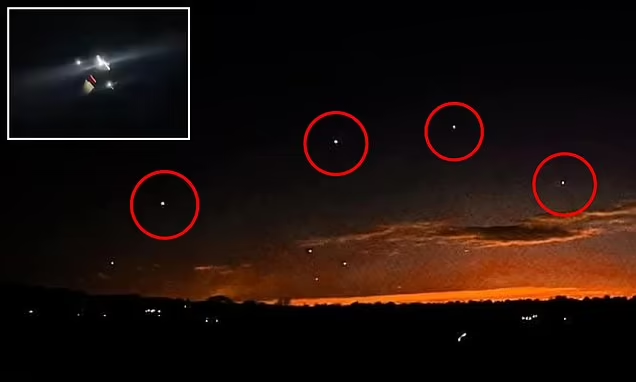In an age where communication is often dependent on complex, centralized infrastructures like cellular networks and the internet, Meshtastic emerges as a refreshing alternative. Designed as an open-source, peer-to-peer communication system, Meshtastic harnesses the power of LoRa (Long Range) radios to provide a low-cost, off-grid solution for messaging and GPS tracking. Whether you’re an outdoor enthusiast venturing into remote areas, a community preparing for emergencies, or simply someone looking for a reliable local communication tool, Meshtastic offers a practical, DIY approach to staying connected.
At its core, Meshtastic creates a mesh network, allowing users to communicate over several miles without any reliance on traditional networks. Each node in the network acts as a relay, enabling messages to hop between devices, extending the range and reliability of the system as more nodes are added. With nodes available for around $30, Meshtastic is an affordable, accessible option that invites customization and innovation through its open-source design. This article will explore how Meshtastic works, its key features, and the various real-world applications where it excels.
Whether you’re hiking in the wilderness, managing an outdoor event, or preparing for disaster scenarios, Meshtastic’s decentralized network ensures you’ll never be out of reach.
Why Meshtastic?
Meshtastic stands out in the world of off-grid communication systems due to its unique combination of open-source development, affordability, and ease of use. Whether you’re looking for a reliable way to stay connected in remote areas or need a backup communication method in emergency situations, Meshtastic offers a solution that is both effective and accessible. Let’s dive into the key reasons why Meshtastic is a great choice.
Off-Grid Communication
One of Meshtastic’s most compelling advantages is its ability to function completely off-grid. Unlike traditional cellular networks or internet-based communication tools, Meshtastic requires no centralized infrastructure, making it an ideal option for users in remote areas or those preparing for scenarios where conventional networks might be unavailable, such as natural disasters or power outages. By utilizing LoRa radio technology, Meshtastic enables users to send messages and GPS locations over long distances, without relying on cellular towers or internet connections.
Affordability
Compared to other communication systems, Meshtastic is highly affordable. The hardware costs are minimal, with most devices priced around $30, making it accessible for a wide range of users, from outdoor enthusiasts to emergency responders. This low cost, combined with the ability to extend the network by adding more nodes, allows Meshtastic to be scaled up for larger groups or communities without breaking the bank.
Open Source and Community-Driven
As a fully open-source project, Meshtastic benefits from continuous development and improvement by its user community. This means that new features, bug fixes, and enhancements are regularly added, making Meshtastic a dynamic and evolving tool. The open-source nature also allows for extensive customization, enabling users with technical expertise to tailor their network to meet specific needs. Additionally, the active Meshtastic community provides support through forums and online resources, making it easier for new users to get started and troubleshoot any issues.
Easy Setup and Expansion
Setting up Meshtastic is relatively simple, especially for those with basic technical skills. Most users can set up a node by flashing the firmware and configuring their device via a web interface or mobile app. Once the initial node is established, expanding the network is as easy as adding more devices, which automatically join the mesh and help extend the range. This ease of scalability makes Meshtastic a great choice for both individual users and larger groups, such as search and rescue teams or community preparedness organizations.
Localized and Peer-to-Peer Networks
Meshtastic is designed for peer-to-peer communication, making it ideal for small groups who need to stay in touch over localized areas. It’s particularly useful in situations where team members are spread out over rugged terrain or remote locations. Whether you’re coordinating a hiking trip, managing an outdoor event, or simply keeping in touch with a group in an area without reliable cell service, Meshtastic’s decentralized mesh network ensures that everyone can stay connected.
Meshtastic provides an affordable, customizable, and reliable communication solution for off-grid use. Its combination of LoRa technology, easy setup, and community-driven development makes it an excellent choice for a variety of scenarios, from outdoor adventures to emergency preparedness.
Primary Use Cases for Meshtastic
Meshtastic is a versatile tool that shines in several key areas, offering a practical communication solution for a wide range of activities. From outdoor adventures to emergency preparedness, its decentralized, off-grid capabilities make it an invaluable resource.
Outdoor Activities
Meshtastic is particularly well-suited for outdoor enthusiasts. Hikers, campers, and backpackers can use the system to stay connected when venturing into remote areas where cellular coverage is non-existent. The mesh network allows groups to communicate across large distances, ensuring safety and coordination during expeditions. Off-road adventurers, such as those on overland trips or off-road vehicles, can also use Meshtastic to maintain communication between members of the group, even in rugged terrains far from the reach of traditional networks.
Emergency Preparedness and Disaster Relief
One of the most critical use cases for Meshtastic is in emergency scenarios. When natural disasters like hurricanes, wildfires, or earthquakes disrupt traditional communication networks, Meshtastic can provide a lifeline. Its peer-to-peer communication system is decentralized, meaning it doesn’t rely on any central infrastructure, which is often the first to fail in a disaster. Communities can use Meshtastic to build local networks, enabling communication between families, neighbors, or first responders, even when cell towers are down or overloaded.
Remote Work and Research Teams
For teams working in remote locations, such as environmental researchers, geologists, or surveyors, Meshtastic offers a reliable way to stay connected. It’s especially useful in areas with no internet or cell service, where maintaining communication over long distances is crucial for safety and project coordination. Meshtastic’s ability to relay GPS locations also makes it ideal for tracking the movement of team members across large areas, ensuring everyone stays in contact.
Local Neighborhood Communication
In addition to outdoor and emergency applications, Meshtastic can also be used to create ad-hoc communication networks in more populated areas. Neighborhoods, rural communities, or off-grid settlements can use Meshtastic to build a low-cost local communication network. This can be particularly useful for coordinating community events, neighborhood watch programs, or simply keeping in touch with neighbors without relying on mobile service providers.
Meshtastic’s ability to adapt to a variety of scenarios makes it a highly flexible and valuable communication tool for anyone needing reliable, off-grid messaging and GPS tracking. Its real-world applications extend from casual outdoor use to critical emergency management, making it a go-to option for staying connected when traditional networks fail.
Comparison to Other Technologies
While Meshtastic is an impressive tool for off-grid communication, it is important to understand how it compares to other similar technologies. By looking at its strengths and limitations alongside alternative systems like Helium, satellite communication, or cellular-based solutions, you can better determine which system suits your needs.
Meshtastic vs. Helium
Meshtastic and Helium both use LoRa technology, but they are designed for different purposes. Meshtastic excels at peer-to-peer communication, providing a decentralized mesh network where each node acts as a relay to extend the range. It’s particularly useful for outdoor enthusiasts and small communities that need localized communication without the need for internet connectivity.
In contrast, Helium is a blockchain-based network primarily designed for IoT (Internet of Things) devices. Helium Hotspots offer wide-area coverage and allow users to earn cryptocurrency (HNT) by hosting a Hotspot and providing coverage for IoT devices. Helium is geared more toward smart city applications, asset tracking, and environmental monitoring on a larger scale, rather than localized communication. While Helium’s coverage is impressive, it requires a higher upfront investment in hardware, with Hotspots costing $300 to $1000 or more. In summary, Meshtastic is better suited for personal communication in off-grid scenarios, while Helium excels in large-scale IoT deployments and monetization opportunities.
Mesh Networks vs. Centralized Networks
Mesh networks like Meshtastic offer a decentralized alternative to traditional, centralized networks like cellular or satellite communication systems. In a centralized network, all communication passes through a central point—such as a cell tower or satellite—before reaching its destination. While this is effective for large-scale infrastructure, it is vulnerable to outages if the central hub fails or is overloaded.
Meshtastic’s mesh network, on the other hand, allows each node to communicate with others directly, bypassing the need for a central control point. This means that as long as there are nodes within range, the network can continue functioning even if some parts fail. This resilience makes mesh networks particularly valuable in emergency scenarios or in remote areas where centralized networks might be unreliable or unavailable.
Cost and Accessibility
One of Meshtastic’s key advantages over other technologies is its low cost. The entry point for a Meshtastic network is as low as $30 per device, making it accessible to a wide range of users. In comparison, satellite communication solutions, such as Starlink or Iridium, require costly equipment and monthly subscription fees, which may be prohibitive for casual users or small groups. While satellite systems provide global coverage, Meshtastic’s cost-effectiveness and scalability make it a more practical option for localized communication needs.
Meshtastic’s peer-to-peer mesh network stands apart from centralized networks by offering flexibility, affordability, and reliability in off-grid scenarios. While other technologies like Helium, satellite communication, and cellular networks have their strengths, Meshtastic shines in situations where decentralized, low-cost communication is essential.
How to Get Started with Meshtastic
If Meshtastic’s off-grid communication capabilities seem like the right fit for your needs, getting started is relatively straightforward. With a few simple steps, you can set up your first Meshtastic node and begin building your own mesh network.
Choosing and Purchasing a Node
The first step in setting up a Meshtastic network is acquiring the right hardware. Popular choices include devices like the TTGO T-Beam, Heltec V3, or other LoRa-based modules. These nodes typically range in price from $25 to $40, making them affordable for most users. You can purchase these devices from online retailers such as AliExpress, Amazon, or specialized electronics stores.
When choosing a node, make sure it operates on the correct frequency for your region. In the U.S., this is typically the 902-928 MHz range, while other regions may use different bands. The device’s compatibility with Meshtastic’s firmware is also essential, as this will allow you to easily flash the device and configure it for use in your network.
Flashing and Setting Up the Node
Once you have your hardware, the next step is to install the Meshtastic firmware. This can be done using a web-based tool like the Meshtastic Web Flasher, which simplifies the process for users. You can access the Web Flasher via Chrome or Edge and follow the prompts to select your device and install the latest stable release of the Meshtastic firmware.
After flashing, the device will reboot, and you can connect to it either through USB or Bluetooth. The Meshtastic mobile app (available for both Android and iOS) or the Meshtastic web client allows you to configure the node, set the region, and start sending messages. Make sure to connect the node’s antenna for optimal range and performance.
Building Your Mesh Network
With one node set up, you can begin to build your network by adding additional devices. Each new node will automatically connect to the others, extending the mesh and increasing the range of communication. This process is simple and scalable, allowing you to easily expand the network as needed. As you add more nodes, you can distribute them over a wider area to ensure robust coverage.
Meshtastic’s ability to scale up or down makes it an ideal solution for various applications, from small personal networks to larger community setups. The network operates without any need for centralized infrastructure, providing seamless communication across distances, even in rugged or remote areas.
Using the Meshtastic App
The Meshtastic app is a convenient way to manage your nodes, send messages, and track GPS locations. Available for both Android and iOS, the app allows users to configure their nodes, join channels, and communicate with other users in real time. The app also offers a messaging interface that feels similar to standard text messaging, making it user-friendly for anyone familiar with mobile messaging apps.
For more advanced users, Meshtastic can be integrated with services like MQTT, which allows you to send messages to and from your network via the internet, providing additional flexibility when off-grid communication isn’t required. However, to keep your network fully off-grid, it’s best to avoid internet-based features and focus on peer-to-peer communication through LoRa.
By following these steps, you can easily set up and expand a Meshtastic network, enabling reliable off-grid communication for your specific needs, whether for outdoor adventures, emergency preparedness, or local community use.
Challenges and Future of Meshtastic
While Meshtastic offers a powerful and flexible communication solution, it’s important to recognize that the system is not without its challenges. Understanding these limitations can help users prepare for potential issues and contribute to the ongoing improvement of this community-driven project.
Current Limitations
One of the main limitations of Meshtastic is its relatively basic encryption. While the system uses AES 128/256-bit encryption, it is not designed for high-security communication. Users relying on Meshtastic for sensitive data transmission should be aware that its privacy features may not meet the rigorous standards of more secure, closed-source systems. Additionally, its encryption can be disabled when operating in Ham radio mode, which allows for greater transmission power but reduces security.
Another challenge is the technical knowledge required to set up and manage the system. While the Meshtastic community has worked hard to make the platform accessible, users without prior experience in flashing firmware or configuring radio settings might find the initial setup somewhat daunting. However, the wealth of online resources and community support can help mitigate this learning curve.
Finally, due to the open-source and beta nature of the system, users may encounter bugs or quirks in the software or app. For example, connecting nodes via WiFi can disable Bluetooth in certain devices, which can be frustrating if you’re trying to manage multiple devices through different connection types. These bugs are often resolved by the community, but users should be prepared for some experimentation and troubleshooting during their setup.
Ongoing Developments
Meshtastic is a rapidly evolving platform, with new features, bug fixes, and improvements continuously being developed by its open-source community. One exciting area of development is the potential for longer-range communication through improved LoRa technology and hardware upgrades. As the community experiments with better antennas and more efficient power management, Meshtastic nodes are becoming more reliable and capable of operating over even greater distances.
There is also ongoing work to improve the user interface and app experience. As more people adopt Meshtastic, the community is responding by creating more intuitive interfaces, reducing technical barriers for new users, and streamlining the setup process. Additionally, better integration with external services like MQTT and local servers is providing more versatility in how the system can be used beyond simple peer-to-peer communication.
Future Prospects
The future of Meshtastic looks bright, particularly as the need for decentralized, off-grid communication solutions continues to grow. With increasing interest in outdoor activities, disaster preparedness, and local community networks, Meshtastic has the potential to become a go-to solution for groups seeking affordable, reliable communication in remote or unpredictable environments.
As the technology improves and the community continues to grow, Meshtastic’s versatility could expand into new applications. For instance, integration with more advanced security features, wider adoption of solar-powered nodes for long-term deployments, and improved data transmission capabilities could make Meshtastic a valuable tool for professional use, as well as for personal and recreational applications.
While Meshtastic faces some technical challenges, its open-source nature and the passionate community behind it promise continued growth and innovation. Whether you’re looking for a way to stay connected off-grid or contribute to an evolving communication technology, Meshtastic offers an exciting opportunity to explore and create the future of decentralized networks.
Conclusion
Meshtastic represents a groundbreaking solution for those seeking reliable, off-grid communication without the need for costly infrastructure or centralized networks. Its open-source foundation, combined with LoRa technology, makes it an incredibly versatile and affordable option for a wide range of use cases—from outdoor enthusiasts who need to stay connected in remote areas, to communities preparing for emergency situations, and even local neighborhood networks.
While there are some challenges, such as limited encryption and the technical learning curve, Meshtastic’s active community of developers and users ensures that the system continues to evolve and improve. As the platform grows, both in terms of features and user base, it’s clear that Meshtastic has a promising future as a key tool for decentralized communication.
Whether you’re hiking in the wilderness, organizing an off-road expedition, or preparing your neighborhood for emergencies, Meshtastic offers a flexible, scalable, and reliable way to stay connected when you need it most. With its low cost, open-source nature, and wide range of potential applications, it’s time to explore how Meshtastic can benefit you and your community.










Leave a Reply